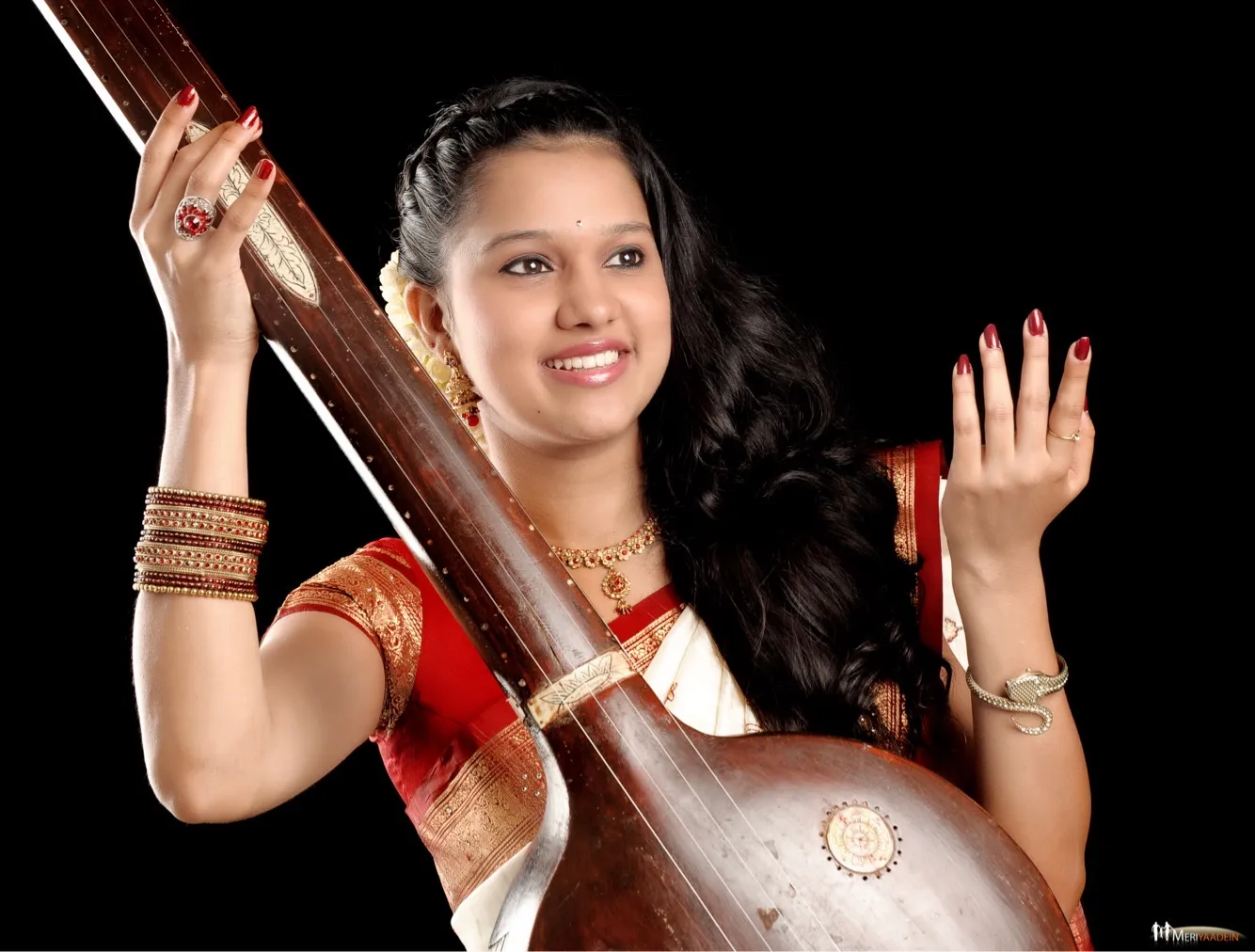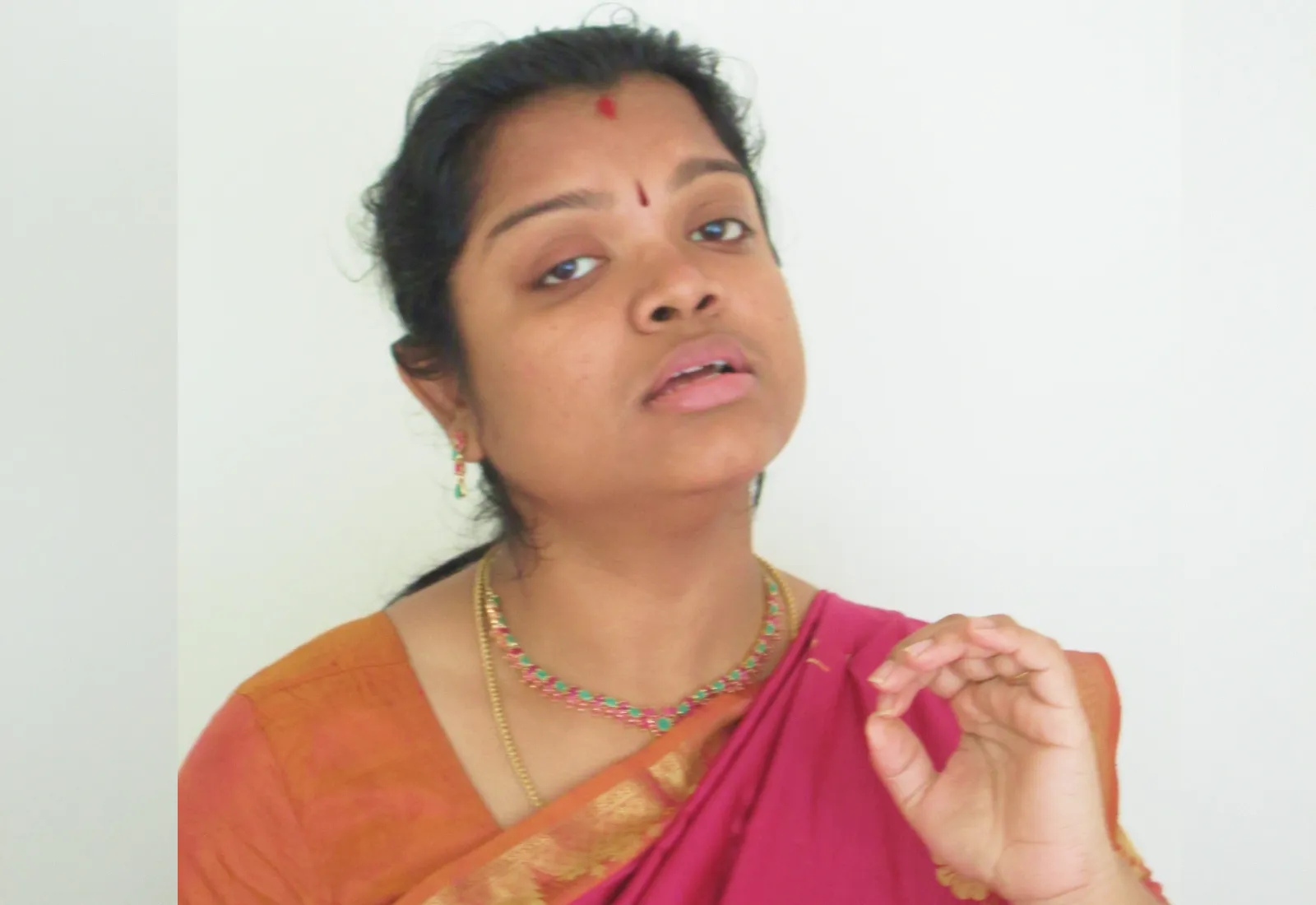M. S. Subbulakshmi - A Name That Fetched Eternal Fame
M.S. Subbulakshmi, gifted immortality to her name with her devotion and contribution to Indian music. Like an explorer, she dived into the technicalities of music and brought back the gems to decorate different genres of Indian music. Her voice reflected the divinity of her soul and her work demonstrated profound knowledge of the triviality of music.
M.S. Subbalaxmi became the intersection point of the linguistic, cultural, and religious diversity of India. She marked the beginning of women’s empowerment by challenging male domination in the Carnatic music space.
The admirers or the ‘Rasikas’ of Carnatic music will forever celebrate her personality, which was a reflection of what she sang!
M.S. Subbulaxmi - Do not miss the chance to know more about the face of Carnatic Music, the Nightingale of Indian Classical Music.
M.S. Subbulakshmi Biography
Born on September 16, 1916, in Madurai, Madras Presidency, India, Subbulakshmi was born to a family of musicians. Her grandmother was a violinist and her mother was a renowned veena player and a regular stage performer. Music was truly in her genes!
She started learning Carnatic music at a young age under the mentorship of Semmangudi Srinivasa Iyer, and later on, she trained in Hindustani music under the guidance of Pandit Narayanrao Vyas. Being a quick learner, in no time, she mastered the diverse music genres representing India.
M.S. gave her first public stage performance at the age of eleven in the company of famous musicians, violinist Mysore Chowdiah and Mridangam player Dakshinamurthy Pillai.
In 1929, she performed at the Madras Music Academy and impressed her audience at the tender age of 13. By the age of 17, she had successfully managed to grab the attention of many colossal figures in the Indian music world.
Her singing prowess fused with her simplicity soon made her a national icon. She travelled as an Indian ambassador to foreign festivals, representing everything cultural and musical. She was sent an invitation to perform at the Edinburgh International Festival, which was held in Scotland in 1963.
This performance was the gateway through which she took the musical heritage of India, pole to pole. Subbalaxmi Ji was invited by then UN Secretary U. Thant to give the UN Day concert on October 23, 1966.
She mesmerized her audiences by performing the ‘Jagadoddharana Adisidaleshoda’, a Krithi in Raag ‘Kapi’ composed by Purandaradasa. And she rendered another composition at the end, ‘Maithreem Bhajatha’, in Sanskrit, composed by Jagadguru Shri Chandrashekharendra Saraswati of Kanchi Kamkotipeetham (Mahaperiyava).
She showcased her talent by performing at the Royal Albert Hall in London. In 1987, the Government of Russia invited MS Subbalaxmi to perform at the Festival of India, held in Moscow. Her talent reached foreign lands, impressing and inspiring audiences across the world.
The United Nations issued a stamp in honor of MS Subbalaxmi- ‘the Queen of Carnatic’ to mark the 50th Anniversary of her legendary performance in 1966, at the UN.
Reaching the Screen
At the very young age of 22, MS had become a singing sensation. And was on her way to mesmerizing audiences through the silver screen. Every role she played gave a glimpse of her real self. Her first movie ‘Sevasadanam’ in 1938, based on the evil dowry system, made her a star overnight.
In 1940, at the age of 24, MS Subbulakshmi got married to a nationalist writer and a staunch Gandhian, T. Sadasivam. In 1941, she played the male character of Narada in the film ‘Savithri’. With this movie, she raised funds for her husband’s weekly magazine, ‘Kalki’.
Her last movie was ‘Meera’, directed by Ellis Dungan, that got released in 1945. She played the lead character in this movie. Every song of the movie was sung by MS, herself. Meera was so much appreciated, that it was remade in Hindi and released in 1947, making MS a national icon.
Subbulakshmi bid adieu to the film industry and decided to focus on her Carnatic music thereafter.
M.S. an Unimitable Artist
The diva M.S. Subbulakshmi with her magical voice had added leaders like Mahatma Gandhi and Pt. Nehru to her fan following. There is an interesting account of her life, that speaks of her singing prowess. Sadadivam’s Madras office of Kalki magazine received a call from Indian National Congress leader, Sucheta Kriplani. The call was about inviting MS Subbulaxmi to Delhi, on October, 2nd.
She was requested if she could sing Meera bhajan ‘Hari Tum Haro’, one of the favorite bhajans of Gandhi. Although Sadasivam was excited he had to politely decline the invitation. He told Kriplani Ji that MS didn’t know the song, moreover, she would not be able to travel to Delhi that particular week.
Sadasivam suggested that Kriplani Ji invite someone else to sing the song to which Kriplani Ji said, “Gandhiji would rather listen to Subbulaxmi recite the verse on a tape than hear anybody else sing it.”
Overnight Subbulaxmi Ji recorded the bhajan on All India Radio studios in Madras, and the tape was sent to Gandhi Ji on his birthday, to honor his request. On January 30, 1948, at his funeral, All India Radio promptly played the bhajan to pay tribute to Mahatma Gandhi.
From her performance in the landmark concert of the UN in New York to the invocation at the inauguration of the 6th Afro-Asian Congress of Opthalmology in Madras, M.S. proved that she was exceptional in every sense. In the concert, she performed compositions in diverse languages, and her invocation song in Madras was wrapped in five languages- Sanskrit, Arabic, Japanese, English, and Tamil.
M.S. succeeded in reviving several lost compositions in Carnatic music. She breathed life into the compositions of the Annamacharaya, a famous Telugu saint. Besides, she also tuned up the works of philosopher Adi Shankara, Marathi saints like Tukaram, and hymns from the Guru Granth Sahib.
What made M.S. Subbulakshmi an Inspirational Figure?
Her originality, simplicity, and purity made her what she is known today, even after her demise. Her admirers believe that she was blessed with a magical voice, and she truly was but that doesn’t put her devotion and practice to question.
She practised music with the sole purpose of connecting with the divine. She had fans all over India, and they were inspired by her because she preached what she sang. She donated her earnings from concerts to charitable causes, which showed that she never sang for materialistic pleasures.
Wearing a simple saree irrespective of the grandeur of the concerts, staying barefoot while singing proved that she was ‘simplicity personified’.
Awards and honors rained upon her – including the Music Academy’s Sangita Kalanidhi, the Magsaysay Award, and the Bharat Ratna. The first Carnatic musician to perform at the Edinburgh Festival (1963) and for the United Nations Assembly (1966) she won rave reviews.
Her statue was installed in Tirupati by the temple authorities, for reviving the works of the medieval poet Annamacharya’s songs praising Lord Venkateswara.
M.S. Subbalaxmi’s Perception of Music
“Indian music is oriented solely to the end of divine communication. If I have done something in this respect entirely due to the grace of the Almighty who has chosen my humble self as a tool.”- M.S Subbalaxmi
The depth of her music was powerful enough to evoke a sense of spirituality in her listeners. Almost every household in South India begins its day with MS’s ‘Bhajagovindam’, ‘Bhavayami’, and ‘Suprabhatam’.
Bhajans, ghazals, patriotic songs, movie songs, whatever she sang would become an anthem. She delivered what she felt, she felt what she delivered. And with this love for music, she gave a face to the cultural canvas of India. Her musical grandiosity was a reflection of her persona.
She always inspired learners and Carnatic music enthusiasts to understand the legacy of this traditional art form. She laid emphasis on vocal culture and vocal exercises for Carnatic music to better understand its complexities.
She worked hard to use all his earnings in the best way possible, donating to those in need. As per records she raised close to 10 million at that time, through her concerts.
A Message by M.S. Subbulakshmi
The humble M.S. Subbulaxmi always advised music enthusiasts to focus on acquiring purity in their voice and adhere to the ‘shruti’ strictly. In an interview she said that learners should ardently practice voice culture, and cultivate the voice, to attain knowledge of the exact positions of Swaras and the way they are spun in different ragas.
M.S. has been an inspiration for many. If you are passionate about learning Carnatic Music and are seeking guidance then you can explore online Carnatic music classes at the convenience of your home.














